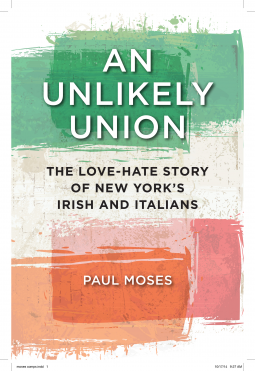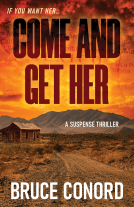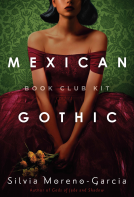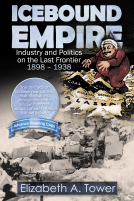
An Unlikely Union
The Love-Hate Story of New York's Irish and Italians
by Paul Moses
This title was previously available on NetGalley and is now archived.
Send NetGalley books directly to your Kindle or Kindle app
1
To read on a Kindle or Kindle app, please add kindle@netgalley.com as an approved email address to receive files in your Amazon account. Click here for step-by-step instructions.
2
Also find your Kindle email address within your Amazon account, and enter it here.
Pub Date Jul 03 2015 | Archive Date Sep 08 2015
Description
An Unlikely Union tells the dramatic story of how two of America’s largest ethnic groups learned to love and laugh with each other after decades of animosity.
They came from the poorest parts of Ireland and Italy and met as rivals on the sidewalks of New York. Beginning in the nineteenth century, the Irish and Italians clashed in the Catholic Church, on the waterfront, at construction sites, and in the streets. Then they made peace through romance, marrying each other on a large scale in the years after World War II.
The vibrant cast of characters features saints such as Mother Frances X. Cabrini, who stood up to the Irish American archbishop of New York when he tried to send her back to Italy, and sinners like Al Capone, who left his Irish wife home the night he shot it out with Brooklyn’s Irish mob. The book also highlights the torrid love affair between radical labor organizers Elizabeth Gurley Flynn and Carlo Tresca; the alliance between Italian American gangster Paul Kelly and Tammany’s “Big Tim” Sullivan; heroic detective Joseph Petrosino’s struggle to be accepted in the Irish-run NYPD; and the competition between Frank Sinatra and Bing Crosby to become the country’s top male vocalist.
In this engaging history of the Irish and Italians, veteran New York City journalist and professor Paul Moses offers a classic American story of competition, cooperation, and resilience. At a time of renewed fear of immigrants, An Unlikely Union reminds us that Americans are able to absorb tremendous social change and conflict—and come out the better for it.
Advance Praise
"In this lively history of the clashes, compromises, and eventual bonding between two feisty immigrant groups, Moses looks at Irish and Italian expressions of religion, social customs, and family life; access to political power; competition for jobs; and cultural forces that shaped their images... A brisk, well-researched look at a significant part of New York's boisterous past."--Kirkus Reviews
"Enlightening and entertaining...Moses offers emblematic, often fascinating tales, including the 'Irish-Italian love story' of Elizabeth Gurley Flynn and Carlo Tresca, the 'spectacular achievements' of NYPD officer Joesph (Guiseppe) Petrosino, and Frank Sinatra and Bing Crosby's relationship."--Publishers Weekly
"Award-winning author and Brooklynite Paul Moses is back with a historic yet dazzling story on the complex relationship between New York's Irish and Italians."--Brooklyn Eagle
"Even the future saint, an Italian, Mother Frances Cabrini, and the Irish Archbishop of New York, Michael Corrigan, argued and couldn't at first get along. The Irish and Italians here in America shared a common faith and hope, but, sometimes charity only came later! What a colorful chronicle of the spice, diversity, yet unity, of the Catholic community, and the magic of America."--Cardinal Timothy M. Dolan, archbishop of New York
"A wonderful, important book. Paul Moses does a masterful job explaining the complex relationship between two ethnic groups that helped define New York City in the 19th and 20th centuries. With great research and a writer's touch, he tells a story that every New Yorker—and would-be New Yorker—needs to know."--Terry Golway, author of The Irish in America
Marketing Plan
No Marketing Info Available
No Marketing Info Available
Available Editions
| EDITION | Other Format |
| ISBN | 9781479871308 |
| PRICE | $107.00 (USD) |
Links
Average rating from 7 members
Featured Reviews
 Andy L, Reviewer
Andy L, Reviewer
An Unlikely Union 4/5
I grew up in the 1970’s in a small Pennsylvania city that still had its ethnic identities intact. Each group- be they Irish, Italian, Polish, German, Lithuanian, etc. had their own churches, bars, funeral homes, cemeteries, restaurants and neighborhoods. The rivalries between them were mostly friendly and took the form of good-natured ribbing, jokes, and softball and dart tournaments. Everybody knew everyone else’s ethnic foods, and the best places to get them. As a result, I was looking forward to this book.
=== The Good Stuff ===
* Paul Moses is a delightful story-teller, and captures the ethnic rivalries between the Irish and Italians quite well. While I was not alive during the violent times, the stories I heard from old-timers match the descriptions in the book of the struggles. At the turn of the century, survival was really thought of as a zero-sum game, so if another group was improving their lot, it was at your expense.
* The book concentrates on a number of different areas- religion, government and public service, electioneering, entertainment and everyday life. Moses captures both the lighter side of the conflicts- “The Italians taught the Irish how to eat”, and the more serious side as we see the Italians struggle to survive in a city dominated by the Irish political machine of Tammany Hall. The stereotypical Irish Cop was a reality-as Italians were a rarity in public service, even as their population percentage increased.
* Moses makes a few very interesting points, the type of thing that is obvious once it is pointed out to you. For example, most Southern Italian immigrants were distrustful of organized religion due to their experiences in Italy. As a result, even though they shared a religion with a percentage of the Irish, they did not support or attend churches to the same extent. However, after a generation or so, the Italians became much more avid church-goers, mimicking the habits of the Irish…while the Irish became more casual attendees.
* Finally, Moses captures the way the two groups have intermixed. Intermarriage went from being shocking to increasingly common, and the politics and cultures of the two groups began to align. Today, if it is not Saint Patrick’s Day, or Columbus Day, it is tough to tell the two groups apart.
=== The Not-So-Good Stuff ===
* Each of the sections of the book is somewhat self-contained, and as a result, some of the information gets a little repetitive. There must be six different explanations of how the Italians went from being a minority to having roughly equal population and status with the Irish. True enough, but I believed it the first time.
* Some of the analysis seems a bit forced. For example, one section of the book describes the “rivalry” between the Italian singers such as Dean Martin and Frank Sinatra with the Irish Bing Crosby. I didn’t live through those times, but I wonder if the author confuses good entertainment marketing with ethnic rivalry.
* The author can get carried away at times with data, and not always present it in the easiest to grasp manner. For example, a section on the rate of Italian/Irish intermarriage seems to drag on with statistics-although the point of increasing intermarriage was easily grasped.
* The obvious question the book brings up is are today’s immigrants any different. Are the current clusters of immigrants really not becoming part of the American melting pot, or does it just seem that way. Moses brings up many good points about how the old neighborhoods worked-and since both groups were somewhat thrown together by circumstances, you couldn’t help but intermix. But today, with the rise of targeted communications, perhaps immigrants have an easier time not integrating. It would have been a logical extension of the book, and I hope to see a follow-up.
=== Summary ===
I found the book to be enjoyable, and a relatively easy read. The stories and analysis were interesting enough to keep my interest, and Moses made a few points that I had never considered…and was able to support his arguments. If you are at all interested in the topic, it is well worth a read.
Readers who liked this book also liked:
Silvia Moreno-Garcia
Historical Fiction, Literary Fiction, Sci Fi & Fantasy








